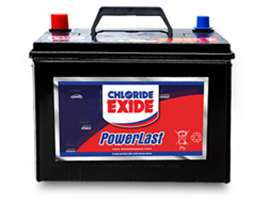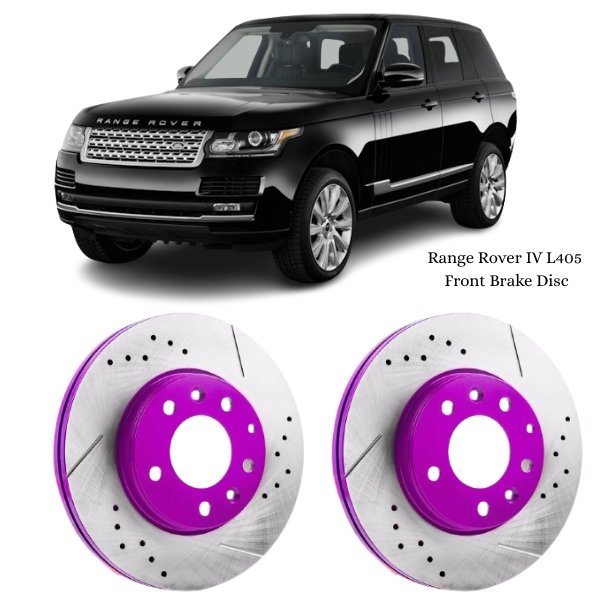Get Range Rover IV L405 Front Brake Disc Assy RN1760V in Kenya
The Front Brake Disc Assembly is one of the most vital components of a vehicle’s braking system. It plays a central role in ensuring safe, smooth, and reliable stopping power by converting kinetic energy into heat through friction. Whether driving at high speed on a highway or navigating city traffic, the front brake disc assembly ensures precise control, stability, and confidence during braking. It is the heart of modern disc brake systems, engineered to perform under high pressure and temperature while maintaining consistent braking performance.
1. Understanding the Role of the Front Brake Disc Assembly
In any vehicle, braking involves transforming motion into heat energy. The Front Brake Disc Assembly—commonly known as the front rotor assembly—is mounted on the wheel hub and rotates with the wheel. When the driver applies the brake pedal, hydraulic pressure pushes the brake pads against the disc surface. The resulting friction slows the rotation of the wheel, eventually bringing the vehicle to a controlled stop.
Since most vehicles carry more weight on the front axle during braking (due to forward weight transfer), the front brake discs handle the majority of the braking force—often up to 70%. For this reason, they must be designed for superior strength, heat dissipation, and durability.
2. Components of the Front Brake Disc Assembly
A Front Brake Disc Assembly consists of several key components that work together to ensure efficient braking performance:
-
Brake Disc (Rotor):
The primary component, made from high-strength cast iron, carbon composite, or steel alloy. It provides the friction surface where the brake pads make contact. -
Brake Hub Section:
This is the center part that connects the disc to the wheel hub and axle. It ensures the disc rotates uniformly with the wheel. -
Cooling Vanes (in Vented Discs):
Found between the two friction surfaces, these vanes help dissipate heat during braking by allowing airflow between the disc faces. -
Disc Mounting Bolts:
Heavy-duty bolts that secure the disc assembly to the hub, maintaining alignment under high stress. -
Splash Shield or Dust Cover (in some designs):
Protects the disc from dirt, water, and debris, enhancing its service life.
Together, these parts form a balanced and high-performance assembly capable of enduring extreme operating conditions.
3. Types of Front Brake Discs
Depending on design and application, front brake discs come in different types:
-
Solid Discs:
Made of a single solid metal plate. Suitable for smaller vehicles or rear brakes where less heat is generated. -
Vented Discs:
Feature internal vanes between two friction surfaces. They allow better heat dissipation and are commonly used in front wheels. -
Drilled Discs:
Have precision-drilled holes to improve heat ventilation and allow gases and water to escape, preventing fade. -
Slotted Discs:
Contain machined grooves that clean the brake pad surface and improve bite under heavy braking. -
Drilled and Slotted Combination:
A high-performance design offering maximum cooling, debris removal, and friction consistency.
The choice depends on vehicle design, driving conditions, and desired performance level.
4. How the Front Brake Disc Assembly Works
The working principle of the Front Brake Disc Assembly involves friction and hydraulic pressure. When the brake pedal is pressed:
-
Hydraulic Pressure: The master cylinder generates hydraulic pressure in the brake lines.
-
Caliper Activation: This pressure pushes pistons inside the brake calipers.
-
Pad Contact: The pistons force the brake pads against both sides of the rotating brake disc.
-
Friction Generation: Friction between the pads and disc converts the vehicle’s kinetic energy into heat energy.
-
Heat Dissipation: The disc’s design allows air to flow through it, cooling it down and preventing overheating.
The result is a controlled and consistent reduction in wheel rotation speed, allowing the driver to slow down or stop smoothly.
5. Materials and Construction
The durability and performance of a brake disc depend heavily on its material composition. Common materials include:
-
Cast Iron: The most widely used material due to excellent heat absorption and wear resistance.
-
High-Carbon Steel: Provides improved heat resistance and reduced vibration.
-
Carbon Composite: Used in performance and racing applications, offering lightweight strength and exceptional heat management.
-
Ceramic Composite: Offers superior fade resistance and longer lifespan, though typically found in high-end vehicles.
Each disc undergoes precision machining to ensure uniform thickness, flatness, and balance—critical for vibration-free braking.
6. Advantages of a Good Front Brake Disc Assembly
A well-engineered brake disc assembly ensures:
-
Consistent Braking Performance: Maintains stopping power even under high temperatures.
-
Reduced Brake Fade: Efficient heat dissipation prevents loss of braking effectiveness during repeated stops.
-
Enhanced Safety: Reliable braking response improves control and reduces stopping distances.
-
Smooth Operation: Minimizes vibration, noise, and juddering.
-
Longevity: Resistant to warping, cracking, and corrosion when maintained properly.
7. Signs of a Worn or Faulty Front Brake Disc Assembly
Brake discs undergo constant friction and heat cycles, leading to wear over time. Common signs of wear include:
-
Vibration or Pulsation: Felt through the brake pedal or steering wheel during braking, often due to disc warping.
-
Squealing or Grinding Noise: Indicates uneven wear or contact with worn brake pads.
-
Scoring or Grooves: Deep lines on the disc surface from metal-to-metal contact.
-
Reduced Braking Efficiency: Longer stopping distances and poor pedal response.
-
Visible Rust or Corrosion: Surface rust can lead to pitting and reduced lifespan.
When such symptoms appear, the disc should be inspected and either resurfaced or replaced.
8. Causes of Brake Disc Damage
Several factors contribute to brake disc wear and failure, including:
-
Overheating from Aggressive Braking: Excessive heat leads to warping or cracking.
-
Worn-Out Brake Pads: Metal backing plates grind against the disc.
-
Contaminants: Dirt or rust between the pad and disc surface.
-
Improper Torque on Lug Nuts: Uneven tightening can cause disc distortion.
-
Poor Quality Materials: Low-grade discs may not handle repeated heat cycles effectively.
9. Maintenance Tips for Longevity
Proper maintenance greatly extends the lifespan of a Front Brake Disc Assembly:
-
Inspect Regularly: Check for uneven wear, cracks, or thickness variation during service intervals.
-
Replace Brake Pads Together: Always install new pads when replacing discs to ensure even wear.
-
Avoid Sudden Braking: Gradual braking helps maintain disc temperature and prevent warping.
-
Clean Components: Keep calipers and rotors free from debris and rust.
-
Use Quality Parts: Always opt for OE-standard or premium aftermarket discs for reliability.
Routine inspection every 20,000–30,000 kilometers ensures your braking system stays in top condition.
10. Installation Overview
Replacing the Front Brake Disc Assembly involves precision and safety measures:
-
Lift the Vehicle and Remove the Wheel.
-
Detach the Caliper and Pads.
-
Unbolt and Remove the Old Disc.
-
Clean the Hub Surface Thoroughly.
-
Install the New Disc and Torque Bolts to Specification.
-
Reinstall the Caliper and New Pads.
-
Perform a Brake Bleed if Necessary.
-
Test Drive to Ensure Smooth Operation.
After installation, it’s crucial to bed-in the brakes—a controlled series of stops—to ensure the pads and discs seat properly for optimal performance.
11. Importance of Front Brake Disc Assembly in Vehicle Safety
The Front Brake Disc Assembly is directly responsible for safe vehicle control. In emergency braking situations, its performance determines how quickly and safely a vehicle can stop. A high-quality disc ensures predictable braking behavior, reducing risks of skidding, brake fade, and instability. For this reason, front discs are designed to meet strict safety and performance standards in every vehicle category—from compact cars to heavy SUVs.
Follow us on Facebook for more parts.





Reviews
Clear filtersThere are no reviews yet.